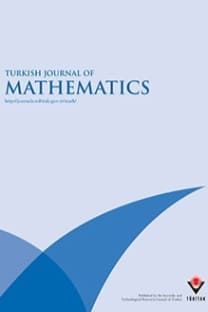An alternative method for SPP with full rank (2,1)-block matrix and nonzero right-hand side vector
An alternative method for SPP with full rank (2,1)-block matrix and nonzero right-hand side vector
___
- [1] Arrow KJ, Hurwicz L, Uzawa H. Studies in Linear and Nonlinear Programming. Stanford University Press, Palo Alto, 1958.
- [2] Axelsson O. Conjugate gradient type methods for unsymmetric and inconsistent systems of linear equations. Linear Algebra and its Applications 1980; 29: 1-16. doi: 10.1016/0024-3795(80)90226-8
- [3] Axler S. Linear Algebra Done Right. Springer, New York, 1997.
- [4] Bai ZZ, Golub GH, Ng MK. Hermitian and skew-Hermitian splitting methods for non-Hermitian positive definite linear systems for non-hermitian positive definite linear systems. SIAM Journal on Matrix Analysis and Applications 2003; 24 (3): 603-626. doi: 10.1137/S0895479801395458
- [5] Fong DC, Saunders M. LSMR: An iterative algorithm for sparse least-squares problems. SIAM Journal on Scientific Computing 2010; 33 (5): 2950-2971. doi: 10.1137/10079687X
- [6] Golub GH, Kahan W. Calculating the singular values and pseudo-inverse of a matrix. Journal of Society for Industrial and Applied Mathematics: Series B, Numerical Analysis 1965; 2 (2): 205-224.
- [7] Kuhn HW, Tucker AW. Nonlinear programming. Proceedings of the 2nd Berkeley Symposium on Mathematics, Statistics and Probability, University of California Press, Berkeley, 1951; 481-492.
- [8] Paige CC, Saunders MA. Solution of Sparse Indefinite Systems of Linear Equations. SIAM Journal on Numerical Analysis 1975; 12 (4): 617-629. doi: 10.1137/0712047
- [9] Perugia I, Simoncini V, Arioli M. Linear Algebra Methods in a Mixed Approximation of Magnetostatic Problems. SIAM Journal on Scientific Computing 1999; 21 (3): 1085-1101. doi: 10.1137/S1064827598333211
- [10] Pestana J, Rees T. Null-Space Preconditioners for Saddle Point Systems. SIAM Journal on Matrix Analysis and Applications 2016; 37 (3): 1103-1128. doi: 10.1137/15M1021349
- [11] Reid N. Saddlepoint Methods and Statistical Inference. Statistical Science 1988; 3 (2): 213-227. doi: 10.1214/ss/1177012906
- [12] Saad Y. Iterative Methods for Sparse Linear Systems. Society for Industrial and Applied Mathematics, 2003. doi: 10.1137/1.9780898718003
- [13] Saad Y, Schultz MH. GMRES: A Generalized Minimal Residual Algorithm for Solving Nonsymmetric Linear Systems. SIAM Journal on Scientific and Statistical Computing 1986; 7 (3): 856-869. doi: 10.1137/0907058
- [14] Tuma M. A Note on the LDLT Decomposition of Matrices from Saddle-Point Problems. SIAM Journal on Matrix Analysis and Applications 2002; 23 (4): 903-915. doi: 10.1137/S0895479897321088
- [15] Turek S. Efficient Solvers for Incompressible Flow Problems - An Algorithmic and Computational Approach. Springer, Berlin, Heidelberg, 1999. doi: 10.1007/978-3-642-58393-3
- [16] Watkins DS. Fundamentals of Matrix Computations. Wiley Interscience, New York, 2002.
- ISSN: 1300-0098
- Yayın Aralığı: 6
- Yayıncı: TÜBİTAK
The integer-antimagic spectra of a disjoint union of Hamiltonian graphs
Dan ROBERTS, Richard M. LOW, Uğur ODABAŞI
Arf numerical semigroups with multiplicity 11 and 13
Meral SÜER, Halil İbrahim KARAKAŞ, Sedat İLHAN
A series evaluation technique based on a modified Abel lemma
John Maxwell CAMPBELL, Marco CANTARINI
Numerical simulations of traveling waves in a counterflow filtration combustion model
Hyperelastic curves along Riemannian maps
Gözde ÖZKAN TÜKEL, Tunahan TURHAN, Bayram ŞAHİN
An alternative method for SPP with full rank (2,1)-block matrix and nonzero right-hand side vector
A parametric family of ternary purely exponential Diophantine equation $A^x + B^y = C^z$
